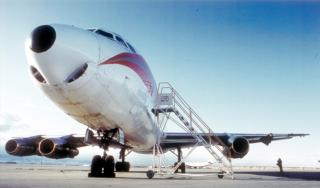Turbulence encounters by general and commercial aviation continue to pose significant safety and flight efficiency and workload concerns. The number of pilot-reported encounters with turbulence is substantial: over the US, moderate-or-greater pilot reports (PIREPs) average about 65,000/year, and severe-or-greater PIREPs average about 5,500/year. More often than not, pilots will try to avoid or exit turbulent air, so turbulence significantly impacts the National Airspace efficiency and air traffic controller workload. Fortunately, not every significant encounter with turbulence results in an injury; nevertheless, according to NTSB, each year turbulence accounts for approximately 75% of all weather-related accidents and incidents. The cost to US airlines due to injuries (medical attention, missed work and liability suits), cabin and aircraft damage, flight delays, and time lost to inspection and maintenance is substantial, with estimates in the $150 – $500 million/year range. For GA aircraft, turbulence encounters account for about 40 fatalities/year.
For multiple decades, NCAR has conducted research aimed at improving a fundamental understanding of the nature and causes of turbulence affecting aviation and has developed novel techniques for better observing and forecasting turbulence.
Research and Development Areas
Turbulence Generation Mechanisms
Fundamental research aimed at characterizing different sources of turbulence continues to be a focus of NCAR scientists. Substantial effort has been invested in developing a better physical understanding of convectively induced (CIT), clear-air (CAT), low level (LLT), and mountain wave (MWT) turbulence with the long-term goal of providing better operational turbulence forecasts. Notable low-level turbulence can be created by the buildings of an urban landscape. Hazardous turbulence can also be created by the wake of large aircraft.
Turbulence Observation
Understanding the nature and genesis of aircraft-scale atmospheric turbulence is complex and requires reliable observational data. Until recently, PIREPs have typically been the only source of routine turbulence information. These reports are incomplete since reporting is voluntary, and subjective to what one pilot views as “light”, “moderate”, or “severe”.
To improve observations of turbulence, NCAR scientists and engineers developed the in situ EDR (Energy Dissipation Rate) system, an automated turbulence observation and reporting system. This in situ EDR software package is currently implemented on Delta, United and Southwest Airlines aircraft, providing tens of thousands of reports per day, and implementation by other domestic and international airlines is underway.
In order to give pilots better information on potentially hazardous regions of turbulence in clouds, particularly thunderstorms, NCAR scientists developed the NEXRAD Turbulence Detection Algorithm (NTDA) which uses ground-based Doppler radar data from the NEXRAD WSR-88D network to remotely detect turbulence within clouds. The algorithm makes use of radar spectrum width measurements from the NEXRAD WSR-88D radars to estimate EDR. These EDR estimates are mapped on a 3D grid with chosen flight altitudes. Continued advancements are being made to the NTDA to increase its coverage, accuracy, speed and maintainability, and to accommodate NEXRAD changes. A similar approach can also be applied to lidar data to capture clear-air turbulence.
Turbulence Prediction
NCAR has developed a turbulence diagnosis and forecast system covering the continental U.S. and, more recently, the globe. The Graphical Turbulence Guidance (GTG) product provides forecasts out to 18 hours, is updated hourly, and provides an ensemble weighted mean of various turbulence diagnostics. Development of a global version of GTG with longer outlook has also been completed and has been implemented at the U.S. National Centers for Environmental Prediction and the UK Meteorological Office. In addition to the GTG forecast system, NCAR is currently developing a nowcast system, GTG-N, which provides rapid (every 15 min) updates that make heavy use of the latest available turbulence observations from the in situ EDR estimates, PIREPs, NTDA, and other sources (e.g., METARs gust information) on a GTG background. This product is intended to provide enhanced pilot situational awareness for clear air, mountain wave and convectively induced turbulence.

